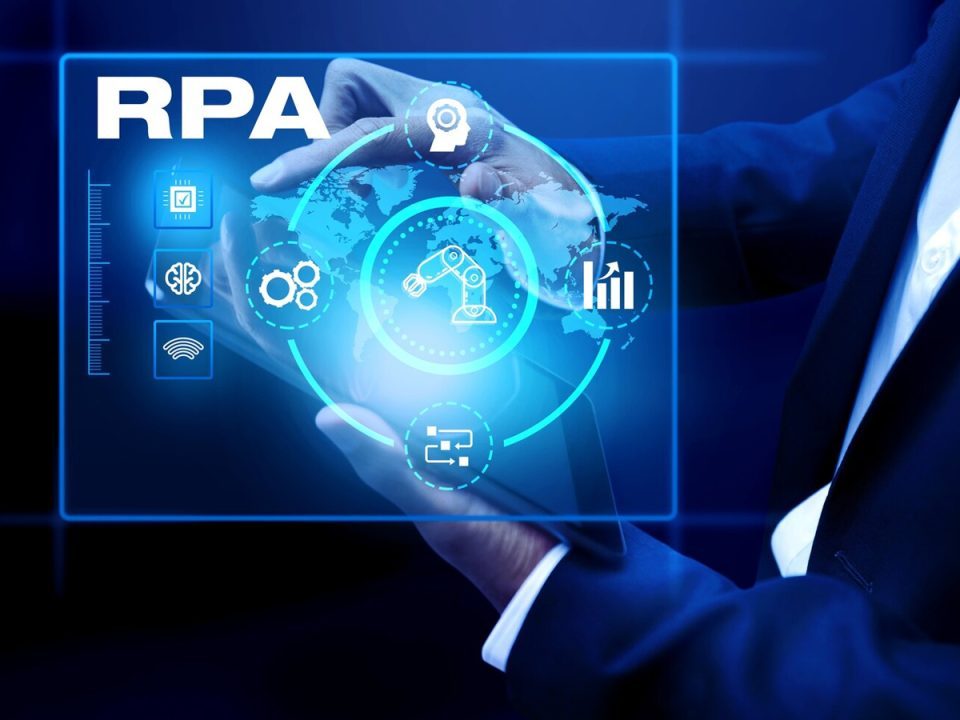The intersection of Robotic Process Automation (RPA) and Artificial Intelligence (AI) in Accounts Payable (AP) automation represents a significant shift towards hyperautomation, where businesses seek to streamline and optimize their financial processes at scale. AP automation focuses on improving the efficiency and accuracy of accounts payable tasks, such as invoice processing, approvals, and payments. Traditionally, these tasks involved manual effort, resulting in errors, delays, and inefficiencies. With the integration of RPA and AI, companies are now moving towards a new era of AP automation that not only automates repetitive tasks but also adds intelligence to the process.
The Role of RPA in AP Automation
RPA involves the use of software robots to mimic human actions and automate rule-based processes that are repetitive and time-consuming. In the context of AP automation, RPA bots can be deployed to handle tasks such as data entry, invoice matching, and payment processing. These bots work across different systems and applications, extracting data from invoices, entering it into enterprise resource planning (ERP) systems, and ensuring that payments are made according to predefined rules.
For example, when a company receives an invoice, an RPA bot can automatically extract relevant data like the vendor’s name, invoice amount, and due date. It can then match this information with purchase orders and receipts stored in the system to ensure accuracy before processing the payment. This reduces the need for manual intervention and speeds up the AP process. RPA alone, however, has its limitations as it works best with structured data and predefined workflows.
Read More : Navigating the Future: Key IT Trends in Financial Services
The Role of AI in AP Automation
AI introduces cognitive capabilities into AP automation, enabling the system to handle more complex and unstructured data. AI-powered systems can process invoices in various formats, including scanned documents, PDFs, and emails, and can understand the context and meaning behind the data. Through natural language processing (NLP) and machine learning algorithms, AI systems can identify key invoice details, even if they vary from one document to another.
AI also brings the capability for intelligent decision-making. For instance, AI can identify patterns in invoice processing and flag discrepancies or potential fraud before they are approved. It can learn from historical data and improve its accuracy over time, continuously refining its ability to detect anomalies or suggest more efficient ways to process payments.
In AP automation, AI can work alongside RPA to provide deeper insights, predict trends, and optimize the overall process. For example, AI can predict cash flow needs by analyzing invoice data, helping businesses manage their finances more effectively. Additionally, AI can categorize expenses, provide recommendations for better payment terms, and even negotiate discounts with vendors based on historical data.
Hyperautomation: Combining RPA and AI
Hyperautomation represents the next level of automation where businesses integrate RPA, AI, and other advanced technologies like analytics, process mining, and cognitive computing to create a fully automated, intelligent AP system. This approach goes beyond automating individual tasks and focuses on automating entire end-to-end processes, allowing for real-time decision-making and continuous optimization.
In AP automation, hyperautomation allows organizations to fully automate the invoice-to-pay process, from receiving an invoice to making the final payment. It enables seamless collaboration between RPA bots and AI-powered systems. For example, RPA bots can handle structured tasks like data entry, while AI systems manage unstructured data and make decisions based on patterns and trends. Together, these technologies reduce human intervention, lower the risk of errors, and increase efficiency.
Hyperautomation also introduces advanced analytics into the AP process, providing businesses with real-time visibility into their financial operations. By analyzing invoice data and payment trends, companies can identify bottlenecks, monitor vendor performance, and optimize their cash flow. This holistic approach to automation allows businesses to scale their operations quickly and adapt to changing market conditions.
Benefits of Hyperautomation in AP
- Improved Efficiency: By automating repetitive tasks and leveraging AI for decision-making, businesses can process invoices faster and with fewer errors. This leads to a significant reduction in processing time and operational costs.
- Enhanced Accuracy: The combination of RPA and AI ensures that invoices are processed accurately, with less manual intervention. AI’s ability to detect discrepancies and fraud further improves the reliability of the process.
- Cost Savings: Automation reduces the need for manual labor in AP, leading to substantial cost savings. Additionally, hyperautomation can identify opportunities for early payment discounts and optimize payment terms with vendors.
- Scalability: Hyperautomation allows businesses to scale their AP processes without adding additional resources. As the volume of invoices increases, the system can handle the workload efficiently, ensuring that the business remains agile and responsive.
- Better Compliance and Reporting: With AI-driven analytics, businesses gain real-time insights into their AP processes. This improves compliance with regulatory requirements and provides more accurate financial reporting.
The intersection of RPA and AI in AP automation is a game-changer for businesses looking to improve their financial operations. By combining the task automation capabilities of RPA with the cognitive intelligence of AI, companies can achieve hyperautomation, where entire processes are automated, optimized, and continuously improved. This not only enhances the efficiency and accuracy of AP operations but also provides businesses with deeper insights into their financial data, enabling smarter decision-making and better cash flow management. As businesses continue to adopt these technologies, hyperautomation will become the new standard in AP automation, driving innovation and competitive advantage.
Read More : Global Fintech Series Interview with Tanya Thomas, EVP for EMEA, Q4
[To share your insights with us, please write to psen@itechseries.com ]
